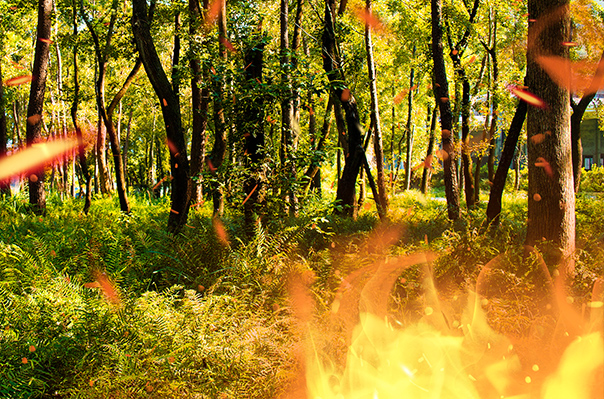FOREST FIRE PREVEBTION
Business requirements
Policy Direction
National Forest Fire Prevention Plan (2016-2025)
The forest fire prevention and control capacity will be significantly improved, the forest fire prevention governance system and governance capacity will be modernized, the 24-hour fire extinguishing rate will reach over 95%, and the forest fire damage rate will be steadily controlled within 0.9 per thousand; the early warning and monitoring capacity will be improved: the national forest fire risk grading early warning model and early warning model will be improved, and the timeliness and accuracy of early warning will be improved. The government will make full use of space technology to improve the timeliness and recognition ability of satellite monitoring of forest fires; the fire watch coverage rate in key areas will reach 85% in the near future and more than 95% by the end of the planning period; on the basis of the existing 3,998 sets of video monitoring systems, 5,425 sets of new video monitoring systems will be built to cover 30% of the high-risk and high-risk areas of forest fires, and the Internet platform will be used to initially build a national forest fire prevention video The plan is to build a national forest fire prevention video surveillance network system using the Internet platform.
Premier Li Keqiang gives important instructions on forest and grassland fire prevention and suppression
The forest and grassland fire prevention is a matter of people's lives and property safety and national ecological security. The company's main focus is on prevention, combination of prevention and suppression, efficient fighting and safety first, in accordance with the principle of "fight early, fight small, fight", compacting the responsibilities at all levels and linking the responsibility of "prevention" and "rescue". The company's main goal is to prevent serious fires in the forest and grassland.
Opinions on the Comprehensive Implementation of the Chief Forestry Officer System issued by the State Office of the Central Government
A long-term mechanism of party and government responsibility, local responsibility, departmental coordination, source management and territory-wide coverage; insisting on party leadership and departmental linkage: establishing and improving a responsibility system with party and government leadership as the core, clarifying the responsibilities of forest (grass) chiefs at all levels for the protection and development of forest and grassland resources, strengthening work measures, coordinating the efforts of all parties, and grasping the work pattern at one level and implementing it at all levels.
Guidance from the State Forestry and Grassland Administration on promoting the development of artificial intelligence in forestry and grassland
Prevention and control of forest and grass fires. Use satellite monitoring, drone patrol, intelligent video monitoring, thermal imaging intelligent identification and other technical means to strengthen forest and grassland fire monitoring. Apply communication and information command platforms to improve the comprehensive command and dispatch capabilities and operational levels of forest and grassland fire risk prediction and forecasting, fire monitoring, emergency communication, auxiliary decision-making and post-disaster assessment.
Industry pain points
Outdated monitoring tools High rate of under-reporting and low accuracy
Many areas still use manual lookout monitoring and mass reporting, which has limited detection capacity and is a serious drain on human resources. Some areas install traditional video surveillance, which is less intelligent, less accurate and more influenced by the environment. Satellite monitoring means have poor timeliness and resolution, and fires are already larger when they are discovered.
Slow response time Limited management tools
The masses have low awareness and rely on manual patrolling of the hills at the peak of the festival, such as Qingming, with limited coverage and insufficient means of supervision and forensics. Fires are dealt with manually and cannot be located quickly enough to view the situation on site. The command to fight fires relies on experience, with insufficient basis for decision making, limited means of analysis and increased difficulty in decision making leading to slower response.
No standards in the industry No uniformity in independent construction across the region
Forest fire prevention has no relevant standards other than the 2016 technical specifications for video surveillance, which are built independently by each province and municipality, with varying quality and a serious waste of resources. Higher-level units have limited means to supervise lower levels and are unable to truly understand the actual fire situation in various places. Leaders lack a basis for decision-making and are unable to visually view the overall construction deployment and effectiveness.
Overall structure
"1 platform + 1 network + 6 sensing systems"










